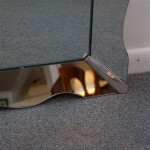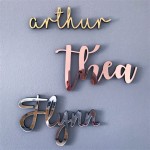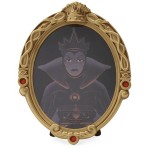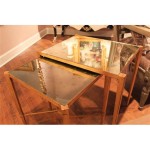Rear View Mirror Peace Sign: A Cultural Phenomenon
The peace sign, a universally recognized symbol, has found a unique and enduring niche hanging from the rearview mirrors of vehicles. While seemingly a simple decorative practice, the rearview mirror peace sign carries with it a complex history, evolving symbolism, and varied interpretations. Understanding its origins and cultural significance provides insight into this enduring automotive adornment.
The origins of the ubiquitous peace sign are often traced back to the British Campaign for Nuclear Disarmament (CND) in the late 1950s. Designed by Gerald Holtom, the symbol was a combination of semaphore signals for "N" and "D," representing "nuclear disarmament." It quickly gained international recognition, becoming a potent emblem for peace and anti-war movements throughout the 1960s and beyond. The transition from protest symbol to automotive accessory, however, is less clearly defined.
One theory regarding the migration of the peace sign to the rearview mirror suggests a connection to the counterculture movements of the 1960s and 70s. During this period, the symbol became closely associated with anti-establishment sentiments and the pursuit of peace and love. Displaying the peace sign on a vehicle, a symbol of personal freedom and mobility, could have been seen as an extension of these values, a silent but visible declaration of one's beliefs.
Another perspective proposes a more practical, albeit less romantic, explanation. The peace sign, with its simple yet distinctive design, makes an effective decorative element. Its relatively small size minimizes obstruction of the driver's view, while its symbolic meaning adds a touch of personality to the vehicle's interior. This perspective suggests the peace sign's popularity stems, at least in part, from its aesthetic appeal and functional suitability.
The symbolism of the rearview mirror peace sign is layered and open to interpretation. For some, it remains a powerful statement of anti-war sentiment and a commitment to peaceful resolution. It serves as a reminder of the importance of peace and a call for a more harmonious world. For others, the symbol has evolved into a more generalized expression of goodwill, positivity, and a desire for safe travels. It can be seen as a silent greeting to other drivers, a gesture of shared humanity on the open road.
Furthermore, the rearview mirror peace sign can also be interpreted as a form of personal expression, reflecting individual values and beliefs. It allows drivers to subtly communicate their personality and worldview without overt statements. In this context, the peace sign becomes less about a specific political stance and more about a broader sense of personal identity.
The prevalence of the peace sign in rearview mirrors has not gone unnoticed by commercial interests. The symbol is readily available in a wide array of materials, colors, and sizes, catering to diverse aesthetic preferences. From simple plastic charms to intricately crafted metalwork, the commodification of the peace sign further contributes to its widespread presence in vehicles.
The continued presence of the peace sign in rearview mirrors, decades after its initial rise to prominence, speaks to its enduring appeal and adaptability. While its original meaning may have become somewhat diluted over time, the symbol continues to resonate with individuals across generations and cultures. It serves as a visual reminder of the ongoing pursuit of peace, whether interpreted as a political statement, a general sentiment of goodwill, or a simple expression of personal style.
The phenomenon of the rearview mirror peace sign offers a fascinating glimpse into the interplay between symbolism, personal expression, and cultural trends. It highlights how a symbol, originally designed for a specific purpose, can evolve and acquire new meanings over time, becoming integrated into the fabric of everyday life. The humble peace sign hanging from a rearview mirror serves as a testament to the power of symbols and their ability to transcend their initial context, continuing to communicate messages and evoke emotions in diverse and evolving ways.
Observing this small but ubiquitous symbol allows for reflection on the dynamic nature of cultural symbols and their capacity to adapt and persist in unexpected places. The rearview mirror peace sign, in its unassuming presence, provides a rich tapestry of meaning, inviting contemplation on its historical context, evolving interpretations, and continued relevance in contemporary society.

Stained Glass Peace Sign Car Charm Rear View Mirror

Boho Peace Sign Car Charm Rainbow Accessories Bohemian Retro Rear View Mirror Hanging Hippie

Peace Sign Car Auto No War Pendant Rearview Mirror Ornament Hanger Metal Rainbow

Peace Charm Sign Rear View Mirror Car Accessory High Vibrations Hippie Boho

Red Hound Auto Silver Bling Peace Symbol Mirror Car Charm Hanger Ornament Purple Rhinestones W Chain Com

Woman Taking A Photo And Peace Sign Reflected In Car Mirror Stock Offset

Rainforest Peace Sign Rear View Mirror Car Accessory High Vibrations Hippie Charm Meditation

Peace Sign Hand Car Charm Mirror Ornament

Enhance Your Car S Style With Peace Sign Mirror Sticker 25x35mm C

Earth Peace Sign Funny Cartoon Design Car Air Freshener Vent Clip Rearview Mirror Hanging Ornament Restroom Perfume Sachet Home Fragrance Etc Shein








